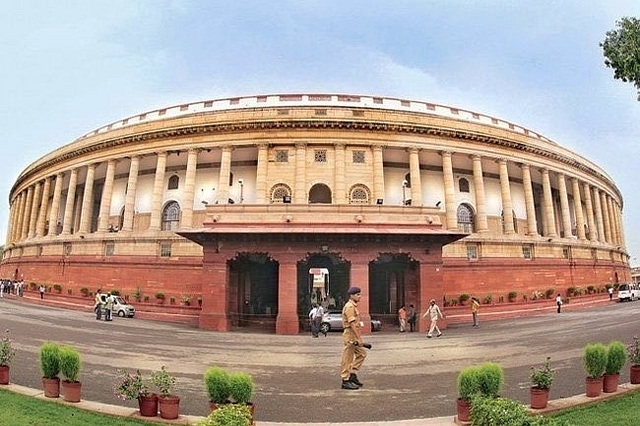
Ten Facts About The No-Confidence Motion In Lok Sabha
These are 10 facts on the no-confidence motion moved in Lok Sabha over the years.
1. The Lok Sabha on Friday (20 July) took up the no-confidence motion against the Narendra Modi government tabled by the Telugu Desam Party (TDP) and other opposition parties.
TDP opened the debate, fielding millionaire Jayadev Galla, managing director of the Amar Raja Group that produces batteries. The move to ask Galla to initiate the debate was surprising since the motion was tabled by TDP’s Vijayawada Member of Parliament Kesineni Srinivas.
2. Lok Sabha Speaker Sumitra Mahajan has set aside a little over six hours for the no-confidence motion. Bharatiya Janata Party (BJP) members will get three hours and 33 minutes to argue while the Congress gets 38 minutes. The TDP gets 13 minutes.
3. The voting will take place at 6 pm, Mahajan said in the House.
4. With the Biju Janata Dal (BJD) and Shiv Sena walking out of the Lok Sabha after deciding to abstain from the no-confidence motion, the number of MPs expected to vote on the motion is likely to be 496. The BJP and its allies have the support of 296, while the Congress and its partners have 147. A little over 50 members are not aligned to any of these major groupings.
5. The Shiv Sena and the BJD have decided to abstain from the motion. The Janata Dal (Secular), headed by Bihar Chief Minister Nitish Kumar, will vote against the no-confidence motion. The AIADMK has said it will not support the no-confidence motion against the centre.
6. The last time that the National Democratic Alliance faced a no-confidence motion was in 2003. The motion was defeated with the Atal Behari Vajpayee government winning confidence of Parliament comfortably.
7. The first no-confidence motion in Lok Sabha was moved in 1963 by Acharya K B Kripalani against the Jawaharlal Nehru government. A year later, another no-confidence motion was moved against Nehru’s successor, Lal Bahadur Shastri.
8. P V Narasimha Rao faced three no-confidence motions during his tenure from 1991 to 1996. Rao overcame the first motion by a margin of 46 votes while cruising through the second one. The third one, which Rao got through by 15 votes, became controversial because the Jharkhand Mukti Morcha was alleged to have been bribed to get the votes.
9. In April 1999, the Vajpayee government lost the no-confidence motion by a single vote. The Bahujan Samaj Party switched over to vote against the NDA a the eleventh hour and Giridhar Gomango, despite being chief minister of Odisha, turned up in Lok Sabha and voted against the government, as he had not resigned from his House membership. In 1979, the then prime minister Morarji Desai resigned even as the no-confidence motion was being debated.
10. The maximum number of no-confidence motions were faced by Indira Gandhi. She faced 15 of them.
Also Read: #No-Confidence Motion: Opposition’s Plan Derailed As BJD Walks Out, Shiv Sena Decides To Abstain